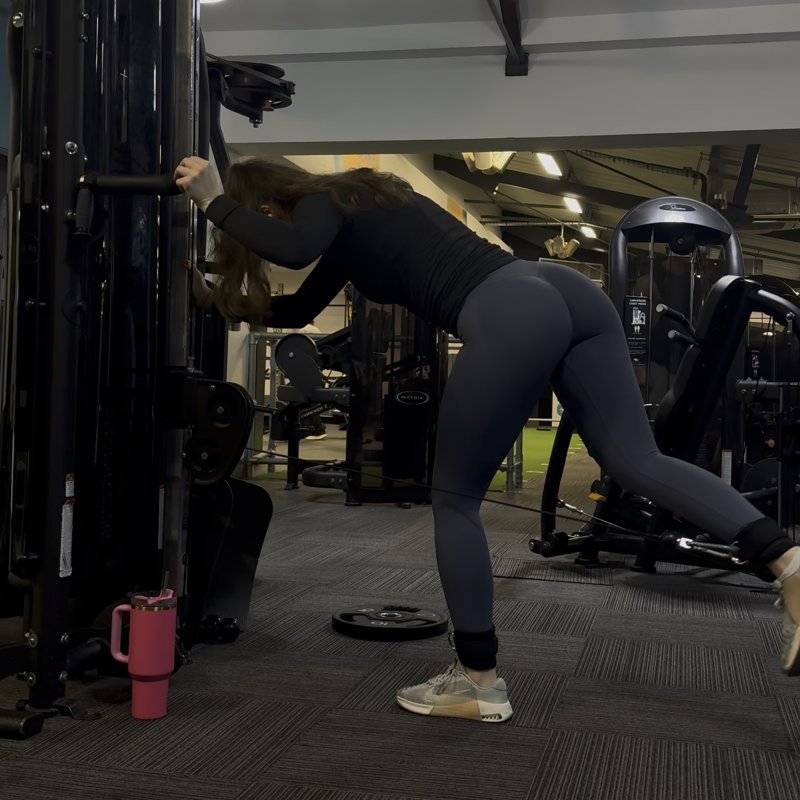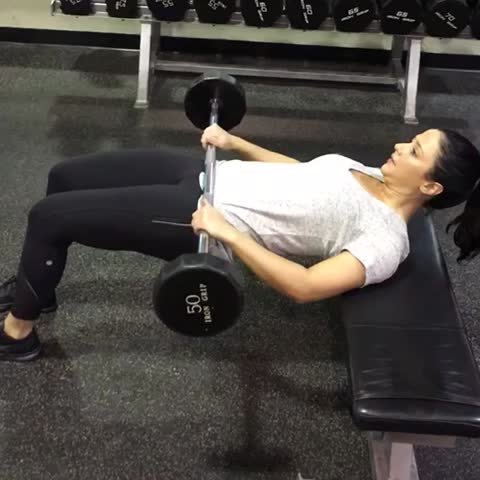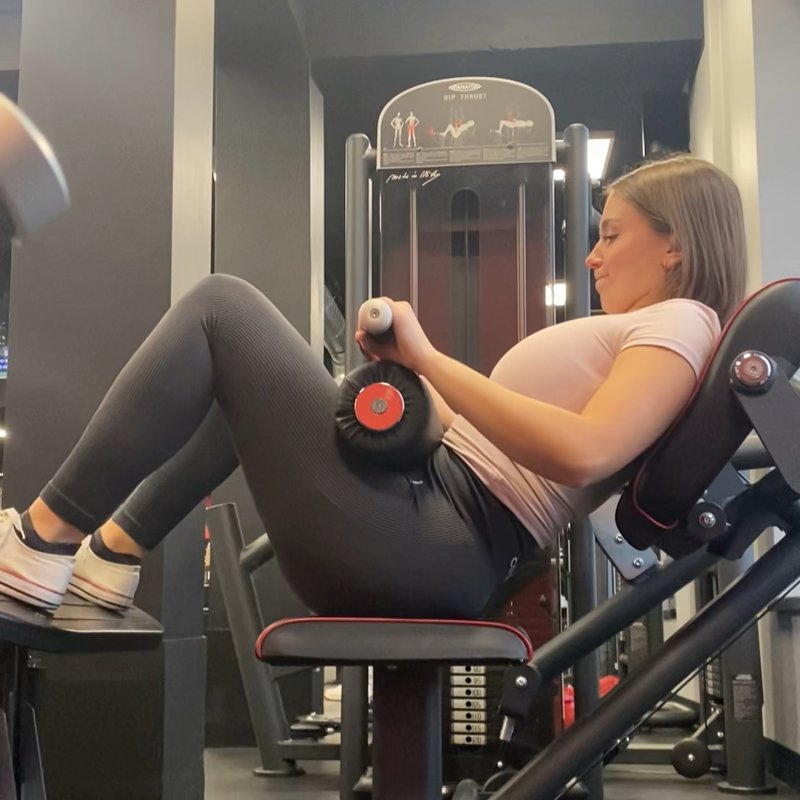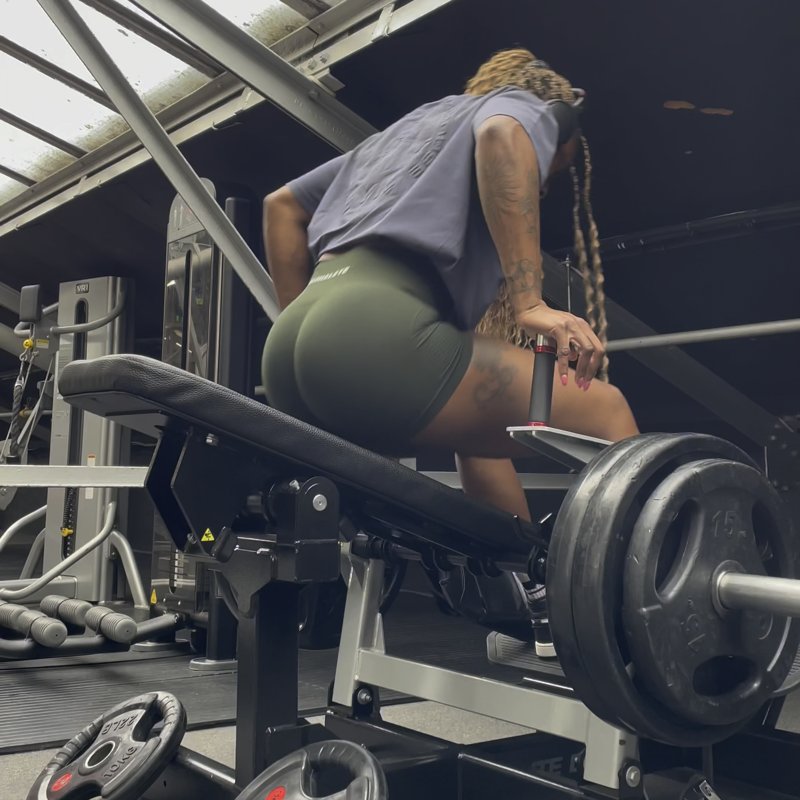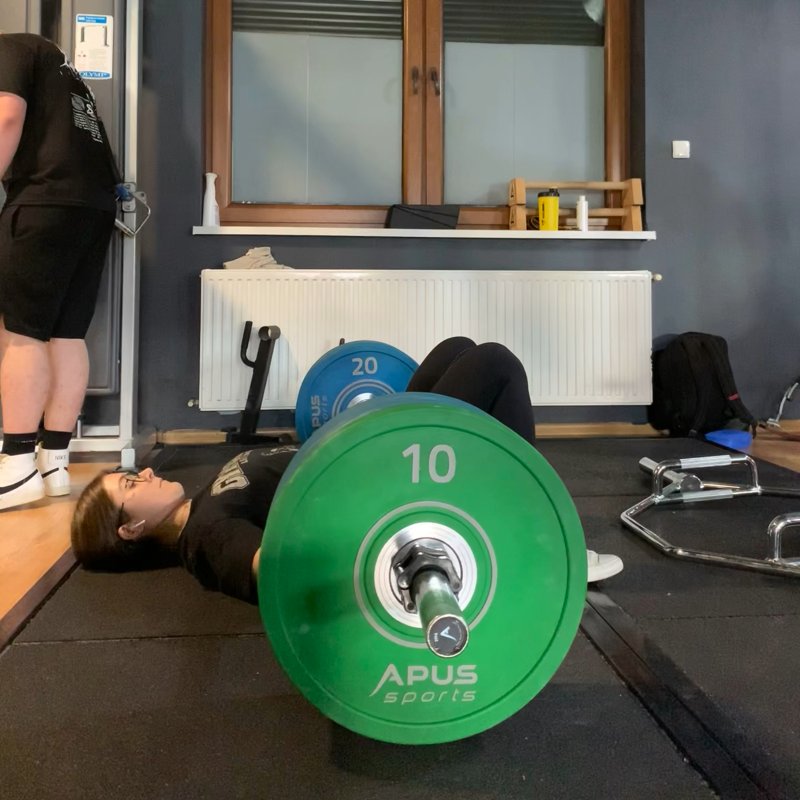Glute Cable Kickbacks: The Ultimate Guide
Glute Cable Kickbacks are an isolation exercise that targets the gluteus maximus through hip extension by pushing the leg backward against cable resistance, creating focused tension through the full range of motion.

Quick Facts
Key Benefit
Concentrated glute activation with constant tension
Primary Muscles
Glutes
Secondary Muscles
Abdominals, Erector Spinae, Hamstrings, Hip Adductors
Equipment
cable machine
Difficulty
Beginner
Type
Isolation
In This Guide
Ready to master the Glute Cable Kickbacks?
Track your progress, see improvements over time, and build strength consistently.
Download GravitusGlute Cable Kickbacks stand as one of the most effective isolation exercises for targeting and developing the gluteus maximus—the largest muscle in the human body and a key contributor to both athletic performance and aesthetic appearance. This focused movement utilizes a cable machine's constant tension to create an optimal environment for glute activation, growth, and strengthening.
Unlike many compound movements where the glutes work in conjunction with other large muscle groups, the cable kickback isolates the glutes through a controlled hip extension pattern, allowing for concentrated effort and mind-muscle connection development. The exercise also provides the benefit of constant tension throughout the entire range of motion—something free weight exercises cannot consistently deliver due to changing leverage and gravitational factors.
Whether your goals include enhancing glute shape and size, improving athletic performance, addressing muscle imbalances, or supporting better posture and lower back health, Glute Cable Kickbacks offer an accessible and effective training tool. The movement's simplicity makes it approachable for beginners, while its potential for variation and progressive loading ensures continued effectiveness for advanced trainees.
Benefits of Glute Cable Kickbacks
The Glute Cable Kickback delivers numerous benefits that make it a valuable addition to any lower body training program.
Targeted Glute Activation
Isolates the gluteus maximus more effectively than compound movements, allowing for focused development and improved mind-muscle connection.
Constant Tension
The cable machine provides consistent resistance throughout the entire range of motion, maximizing time under tension and muscle fiber recruitment.
Joint-Friendly Exercise
Creates minimal stress on the knees and lower back when performed correctly, making it accessible for many individuals including those with certain joint limitations.
Improved Hip Extension Power
Strengthens the posterior chain's ability to extend the hip—a fundamental movement pattern critical for walking, running, jumping, and lifting.
Address Muscle Imbalances
Working one leg at a time allows you to identify and correct strength disparities between sides, potentially reducing injury risk and improving overall function.
Enhanced Mind-Muscle Connection
The isolated nature of the movement helps develop greater neuromuscular control and conscious activation of the glute muscles, which can transfer to improved recruitment during other exercises.
Proper Form & Technique
Setup
- Attach an ankle cuff to a low cable pulley machine.
- Stand facing the cable machine, about arm's length away from it.
- Secure the ankle cuff around the ankle of your working leg.
- Hold onto the machine's support or a stable structure for balance with one or both hands.
- Place your weight primarily on your standing leg, keeping a slight bend in the knee to avoid locking it.
- Position your working leg slightly forward with a small bend in the knee, allowing the cable to create light tension.
Movement
- Maintain a straight back with natural spinal curves—avoid excessive arching or rounding.
- Keeping your core engaged and hips squared forward, begin to extend your working leg backward.
- Push through your heel rather than your toe, focusing on contracting the glute muscles to drive the movement.
- Extend your leg behind you as far as possible without rotating your hips or compromising your lower back position.
- At the peak of the movement, your leg should be extended behind you with your glutes maximally contracted.
- Hold the contracted position momentarily (1-2 seconds) to maximize glute activation.
Return
- In a controlled manner, slowly bring your leg back to the starting position, maintaining tension in the glute muscles.
- Avoid allowing momentum to pull your leg forward—control the eccentric (lowering) phase.
- Return to the starting position without letting your working foot touch the floor between repetitions to maintain tension.
- Immediately begin the next repetition when your leg returns to the starting position.
- After completing all repetitions on one side, switch to the other leg.
Key Form Tips
Hip Position
Keep your hips squared forward throughout the movement—resist the urge to rotate the working hip upward or outward.
Core Engagement
Maintain a braced core to stabilize your pelvis and protect your lower back from excessive movement.
Foot Position
Keep your foot flexed (toes pulled toward shin) to optimize glute activation and minimize calf involvement.
Controlled Motion
Move deliberately through both the extension and return phases—avoid using momentum or swinging the leg.
Range of Motion
Focus on quality movement rather than quantity—extend as far as possible while maintaining proper form.
Mind-Muscle Connection
Consciously focus on contracting your glute muscles rather than just moving your leg backward.
Muscles Worked
Primary Muscles
- glutes: The gluteal muscles, with the gluteus maximus (largest muscle in the buttocks) serving as the primary target and main driver of the hip extension motion, while the gluteus medius assists in stabilizing the pelvis and preventing excessive hip rotation. All gluteal muscles work together to push the leg backward against resistance.
Secondary Muscles
- hamstrings: This group of three muscles at the back of the thigh (semitendinosus, semimembranosus, and biceps femoris) assists in extending the hip, particularly when the knee is kept slightly bent during the movement.
- erector spinae: These lower back muscles work isometrically to maintain proper spinal position throughout the exercise, preventing excessive arching or rounding.
- abdominals: The abdominals and obliques activate to stabilize the torso and pelvis, preventing excessive movement or compensation during the kickback motion.
- hip adductors: The inner thigh muscles assist in maintaining proper leg alignment and contribute to overall hip stability during the movement.
Common Mistakes and How to Fix Them
Arching the Lower Back
Excessive lumbar lordosis (back arching) during the kickback motion shifts stress from the glutes to the lower back and can lead to discomfort or injury. Fix by maintaining a neutral spine position through conscious core engagement. Think about keeping your ribs connected to your pelvis rather than allowing them to flare out. If necessary, reduce the range of motion temporarily until you can maintain proper positioning.
Using Momentum
Swinging the leg or using body momentum to move the weight reduces glute activation and increases risk of strain. Focus on controlled movement initiated by the glutes rather than momentum. Slow down your tempo (eg. 2 seconds out, 1 second squeeze, 2 seconds return) and potentially reduce the weight to facilitate proper control. Visualize pushing through your heel rather than throwing your leg backward.
Hip Rotation
Allowing the hip to rotate outward during the kickback shifts emphasis away from the gluteus maximus to other muscles and reduces effectiveness. Maintain squared hips by imagining your hip bones pointing directly forward throughout the movement. Place your free hand on your working hip to monitor for unwanted rotation. Ensure your setup position has your feet hip-width apart for optimal stability.
Incomplete Range of Motion
Not extending the leg far enough behind you limits glute activation and results. Focus on achieving full hip extension without compromising form. Rather than thinking about how far back your foot goes, concentrate on fully contracting your glute muscle. A helpful cue is to imagine squeezing a coin between your glute muscles at the peak of each repetition.
Excessive Knee Flexion
Bending the knee too much during the kickback turns the movement into more of a hamstring curl than a glute exercise. Maintain only a slight bend in the knee throughout the movement—enough to avoid hyperextension but not so much that the hamstrings take over. Think of your leg as a relatively straight lever with the movement occurring at the hip joint, not the knee.
Poor Standing Leg Stability
Locking the knee of your supporting leg or shifting weight excessively reduces stability and can cause discomfort. Maintain a slight bend in your standing leg and engage your standing leg's glute for stability. If balance is challenging, consider performing the exercise with both hands on a support or try the kneeling variation described in the variations section until you develop greater stability.
Exercise Variations
Position Variations
-
Kneeling Cable Kickback
Performed with the supporting knee and hands on the ground (quadruped position), isolating the working leg and potentially allowing for greater range of motion and stability.
-

Cross Body Cable Kickback
Instead of extending the leg directly backward, the leg crosses slightly behind the standing leg, which can increase gluteus medius involvement and target the glutes from a different angle.
-

Bent Knee Cable Kickback
Maintaining a 90-degree bend in the knee throughout the movement, which can increase the focus on the lower portion of the gluteus maximus.
-

Side Lying Cable Kickback
Performed lying on your side on a mat, with the cable attached to the top leg, which can provide greater stability and isolate the glutes with less lower back involvement.
Equipment Variations
-

Resistance Band Kickback
Using a resistance band around the ankles or attached to a fixed point instead of a cable, making the exercise more accessible for home workouts or when cable machines aren't available.
-

Smith Machine Kickback
Performed by placing the ball of the foot on the Smith machine bar and pushing it backward, providing a guided path of motion that can be helpful for beginners.
-
Straight Leg Kickback
Keeping the leg completely straight throughout the movement for increased resistance at the end range, suitable for more advanced trainees with good hip mobility.
Advanced Variations
-

Pulse Kickback
Adding small pulsing movements at the peak contraction point to increase time under tension and enhance the burn in the glute muscles.
-

Kickback To Abduction Combo
After extending the leg backward, moving it outward to the side before returning to the starting position, engaging both the gluteus maximus and gluteus medius in a single repetition.
-

Deficit Kickback
Standing on an elevated platform to allow for greater range of motion at the beginning of the movement, increasing the stretch on the glutes.
Frequently Asked Questions
For optimal results, incorporate Glute Cable Kickbacks into your training routine 1-3 times per week, allowing at least 48 hours between sessions that heavily target the same muscle groups. Beginners might start with once weekly as part of a comprehensive lower body workout, gradually progressing to twice weekly as recovery capacity improves. More advanced trainees can perform the exercise up to three times weekly if they're varying the intensity and volume between sessions—for example, one heavy day (lower reps, higher weight), one moderate day (medium reps, medium weight), and one lighter day (higher reps, lower weight). Remember that the glutes also receive significant work during compound exercises like squats, deadlifts, and lunges, so factor this additional stimulus into your overall training volume and recovery needs.
Glute Cable Kickbacks can potentially help address certain types of lower back pain, particularly those related to gluteal weakness or underactivation. Strong, properly functioning glutes support proper pelvic positioning and can reduce excessive strain on the lower back during daily activities and exercise. However, the effectiveness depends on proper execution—performed with poor form (especially excessive back arching), the exercise could potentially exacerbate back issues. If you have existing back pain, consult with a healthcare professional before beginning this or any exercise program. Consider starting with the kneeling variation which provides more stability and potentially less stress on the lower back. Focus on maintaining neutral spine alignment and proper core engagement throughout the movement, and start with lighter resistance to master the form before progressing.
The appropriate weight for Glute Cable Kickbacks depends on your experience level, current strength, and the specific goals of your training session. Rather than focusing on an absolute weight number, select resistance that allows you to maintain proper form while completing your target repetition range with the last 2-3 repetitions being challenging. For hypertrophy (muscle growth) purposes, weights that allow for 10-15 controlled repetitions typically provide optimal stimulus. If you cannot maintain proper form—particularly if you experience lower back arching, hip rotation, or momentum-driven movement—the weight is too heavy. Remember that glute isolation exercises typically require less weight than compound movements due to the less favorable leverage and isolated nature of the movement. Progressive overload is important, but should be implemented gradually (small 2.5-5 pound increments) and only after mastering proper form and developing a strong mind-muscle connection.
Several factors could be preventing optimal glute activation during Cable Kickbacks. First, check your form—ensure you're initiating the movement with your glutes rather than your lower back or hamstrings by focusing on squeezing the glute to drive the movement. Your foot should be flexed (toes pulled toward shin) and you should push through your heel rather than your toe. Second, try pre-activating your glutes before starting the exercise with simple movements like glute bridges or clamshells to "wake up" the muscles. Third, slow down the movement and add a deliberate 2-3 second squeeze at the peak contraction. Fourth, check your hip position—keep them squared forward rather than allowing rotation. Finally, consider adjusting your working leg's starting position—if it's too far forward, you may be missing the crucial first portion of glute engagement. If you still struggle with glute activation, you might benefit from working with a qualified fitness professional who can provide hands-on guidance.
Absolutely! While cable machines provide constant tension that's ideal for this movement, several alternatives can effectively target the same muscles. Resistance bands are the most accessible substitute—secure one end to a stable anchor point (or around both ankles in a loop) and perform the same kickback motion. Another option is using ankle weights for resistance, though be aware that the resistance curve will differ from cables (being highest at the top of the movement rather than consistent throughout). For bodyweight alternatives, quadruped hip extensions (fire hydrants) performed with a strong glute contraction can be effective, especially when adding a pulse at the top of the movement. TRX or suspension trainer ankle loops can also replicate the movement with body weight providing resistance. Finally, many modern gyms offer multi-function machines with adjustable pulleys that can be positioned for kickbacks. While these alternatives may vary slightly in their resistance profiles, they all effectively target the glutes and can be progressed over time.
Video Demonstrations
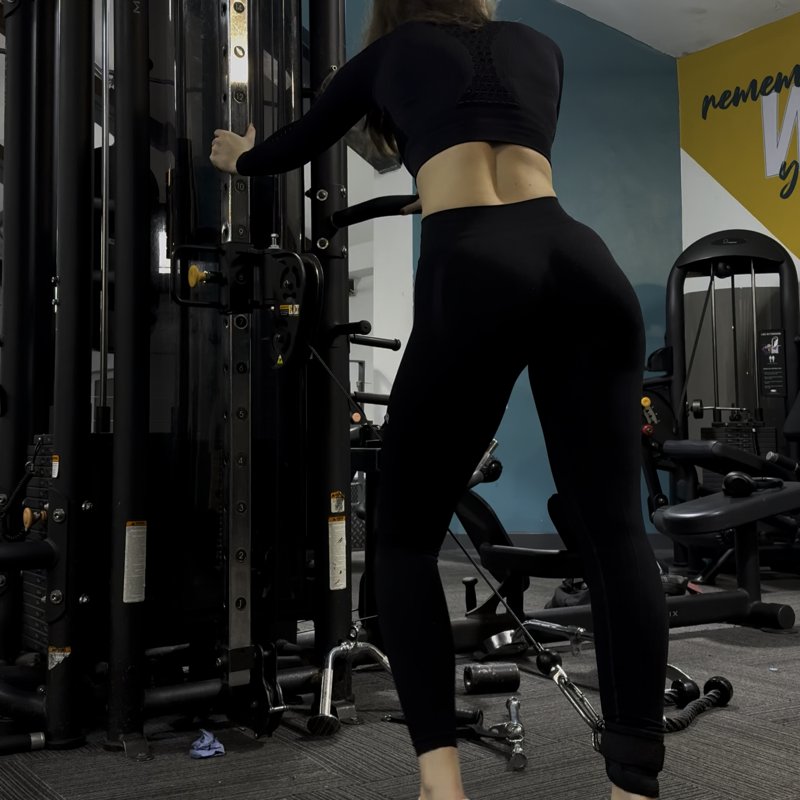
Log in to watch video demonstrations
Login to Watch2 video demonstrations available
Tips from the Community
-

https://youtu.be/OktNiqFFIbA
Track your progress with Gravitus
Download Gravitus to log your workouts, track your progress, and join a community of fitness enthusiasts.

Helpful Resources
One Rep Max Calculator
Find your one rep max for any exercise without maximal testing. Essential for developing effective strength training programs.
Calculate 1RMWorkout Programs
Follow structured workout programs created by fitness professionals to maximize your strength and muscle gains.
View Programs